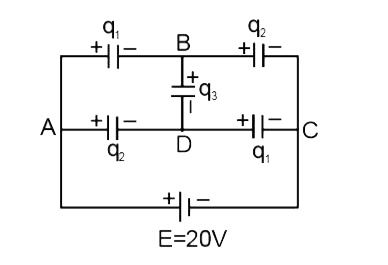five charge q1,q2,q3,q4and q5 are fixed at their positions as shown in figure .s is Gaussian surface .The Gauss's law is given by ∮→E.→ds=qε0
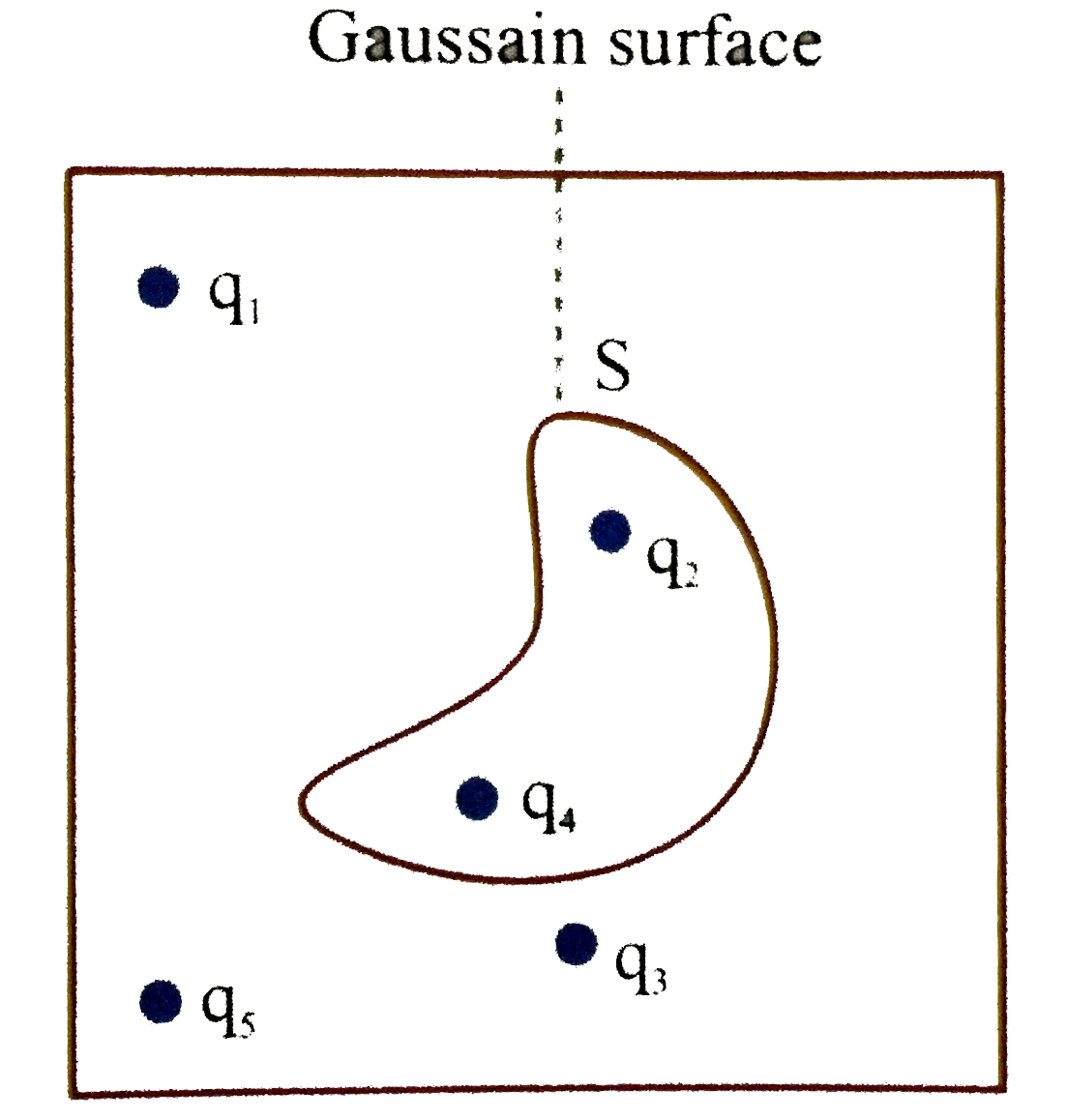
Which of the following statement is correct?
E on the LHS of the above equation will have a contribution from q1,q5andq1,q5 and q3 while q on the RHS will have a contribution from q2andq4 only.
E on the LHS of the above equation will have a contribution from all charges while q on the RHS will have a contribution from q2andq4 only.
E on the LHS of the above equation will have a contribution from all charges while q on the RHS will have a contribution from q1,q3andq5 only
Both E on the LHS and q on the RHS will have contributions from q2andq4 only.
The correct Answer is:B
According to Gauss' law, the term q on the right side of the equation ∫S.E.dS=qε0 includes the sum of all charges enclosed by the surface.
The charges may be located anywhere inside the surface, if the surface is so chosen that there are some charges inside and some outside, the electric field on the left side of equaiton is due to all the charges, both inside and outside S.
So, E on LHS of the above equation will have a contribution from all charges while q on the RHS will have a contribution from q2andq4 only.
Topper's Solved these Questions
Similar Questions
Knowledge Check
q1,q2,q3 and q4 are point charges located at point as shown in the figure and S is a spherical Gaussian surface of radius R. Which of the following is true according to the Gauss's law
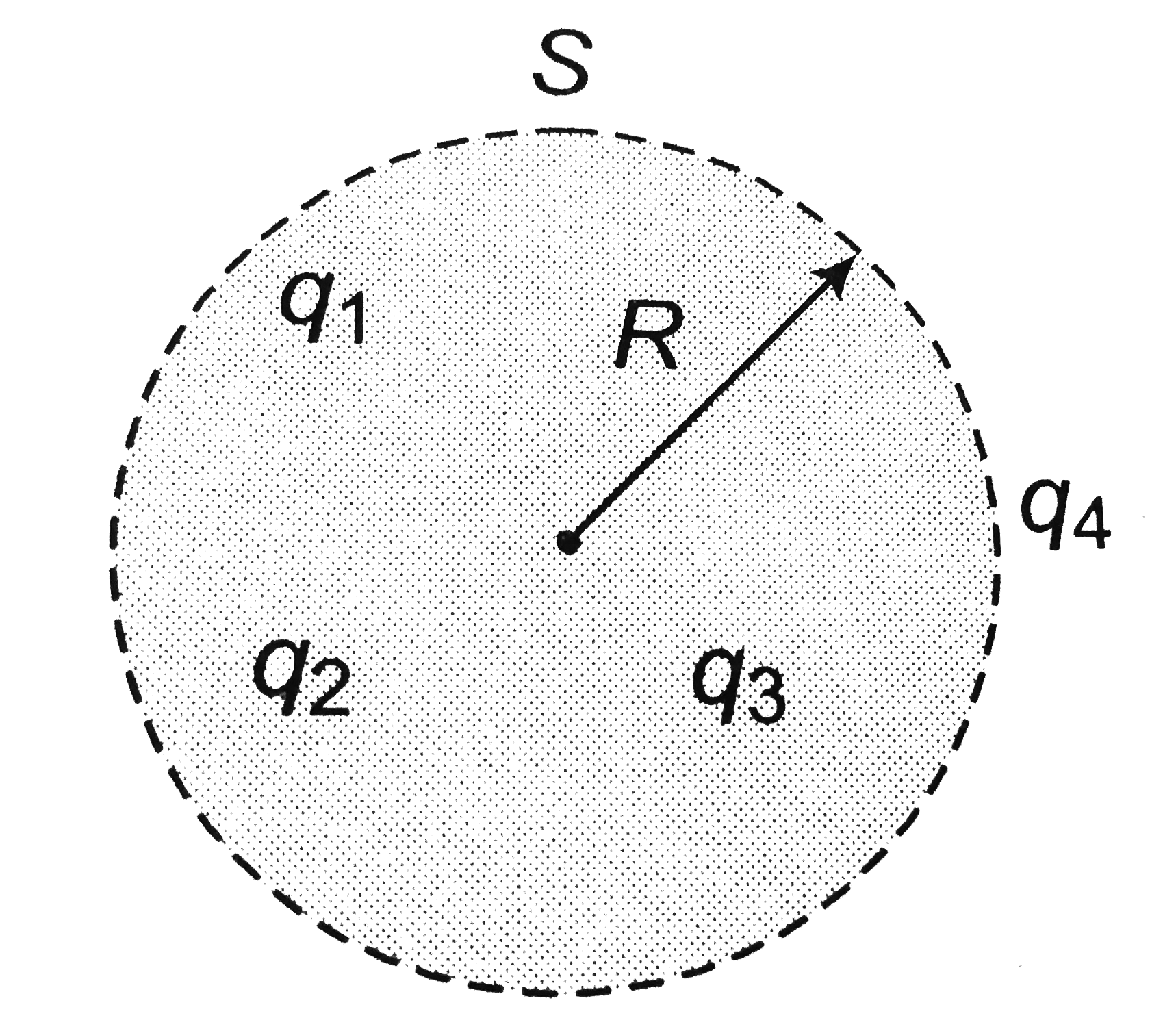 A∮s(→E1+→E2+→E3).d→A=q1+q2+q32ε0B∮s(→E1+→E2+→E3).d→A=(q1+q2+q3)ε0C∮s(→E1+→E2+→E3).d→A=(q1+q2+q3+q4)2ε0DNone of these
A∮s(→E1+→E2+→E3).d→A=q1+q2+q32ε0B∮s(→E1+→E2+→E3).d→A=(q1+q2+q3)ε0C∮s(→E1+→E2+→E3).d→A=(q1+q2+q3+q4)2ε0DNone of theseConsider Gauss's law
∮→E⋅→ds=qε0
Then, for the situation shown in figure at the Gaussian surface
 A→Edue→q2 would be zero.B→E due to both q1andq2 would not be zeroCϕ due to both q1andq2 would not be zero.Dϕ due to q2 would be zero.
A→Edue→q2 would be zero.B→E due to both q1andq2 would not be zeroCϕ due to both q1andq2 would not be zero.Dϕ due to q2 would be zero.Two fixed charges −2Q and +Q are located at points (−3a,0) and (+3a,0) respectively. Then which of the following statement is correct?
APoints where the electric potential due to the two charges is zero in x-y plane, lie on a circle radius 4a and centre (5a,0)Bpotential is zero at x=a and x=9aCboth a and b are wrongDboth a and b are correct
Assertion: Four point charges q1,q2,q3 and q4 are as shown in Fig,The flux over the shown Gaussians surface depends only on charges q1 and q2
Reason:Electric field at all points on Gaussians surface depends on any charges q1 and q2

View SolutionAssertion:- In a given situation of arrangement of charges, an extra charge is placed outside the Gaussion surface. In the Gauss Theroem
∮→Ed→s=Q∈ε0Q∈ remains unchanged whereas electric field →E at the site of the element is changed.
Reason:- Electric field →E at any point on the Gaussian surface is due to inside charge only.
View SolutionThree charges −q1,+q2 and −q3 are placed as shown in the figure. The x-component of the force on −q1 is proportional to
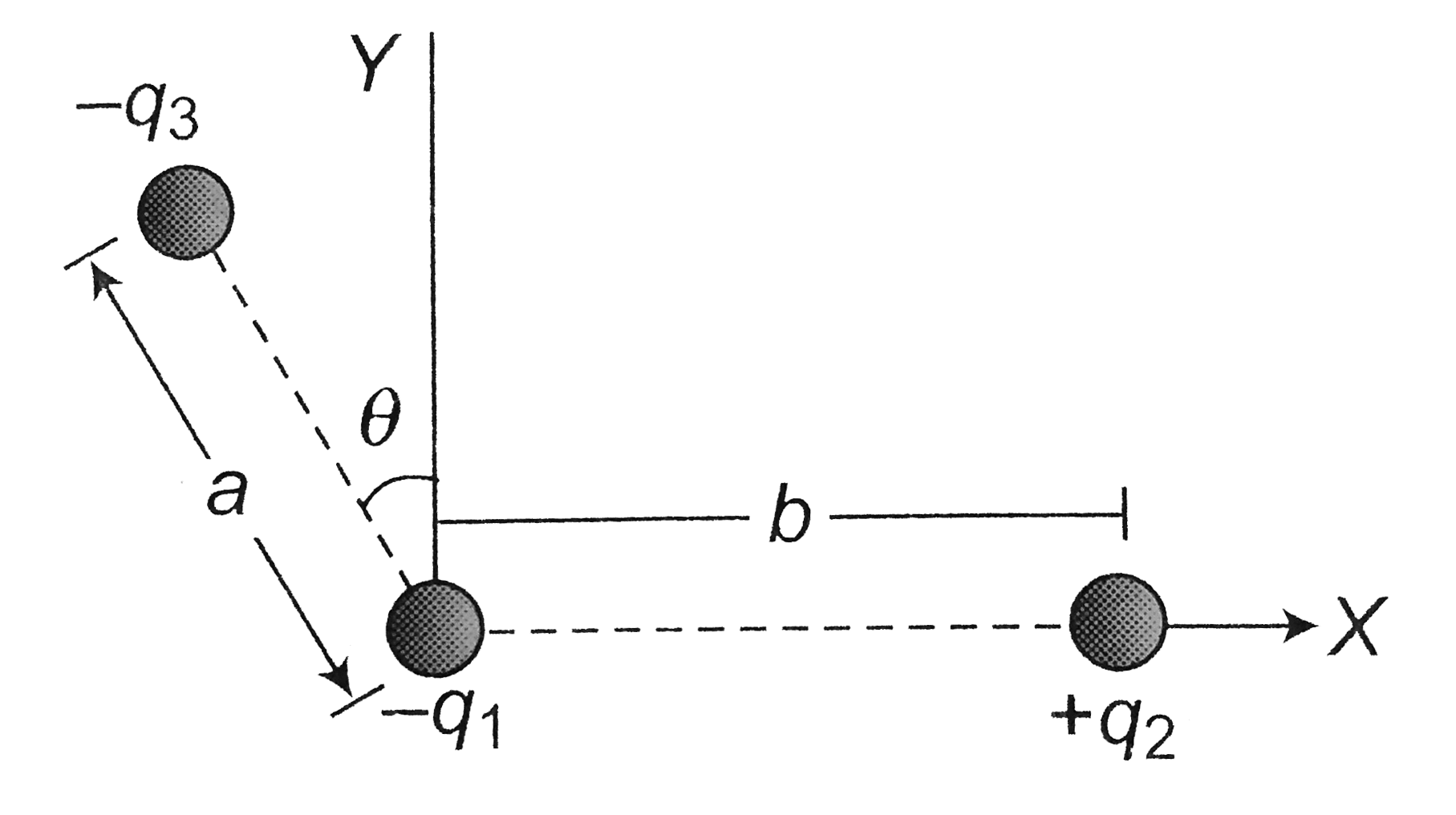
View SolutionThree charges −q1,+q2 and −q3 are placed as shown in the figure. The x-component of the force on −q1 is proportional to

View SolutionFigure shows four charges q1,q2,q3,andq4 fixed is space. Then the total flux of the electric field through a closed surface S, due to all the charges, is
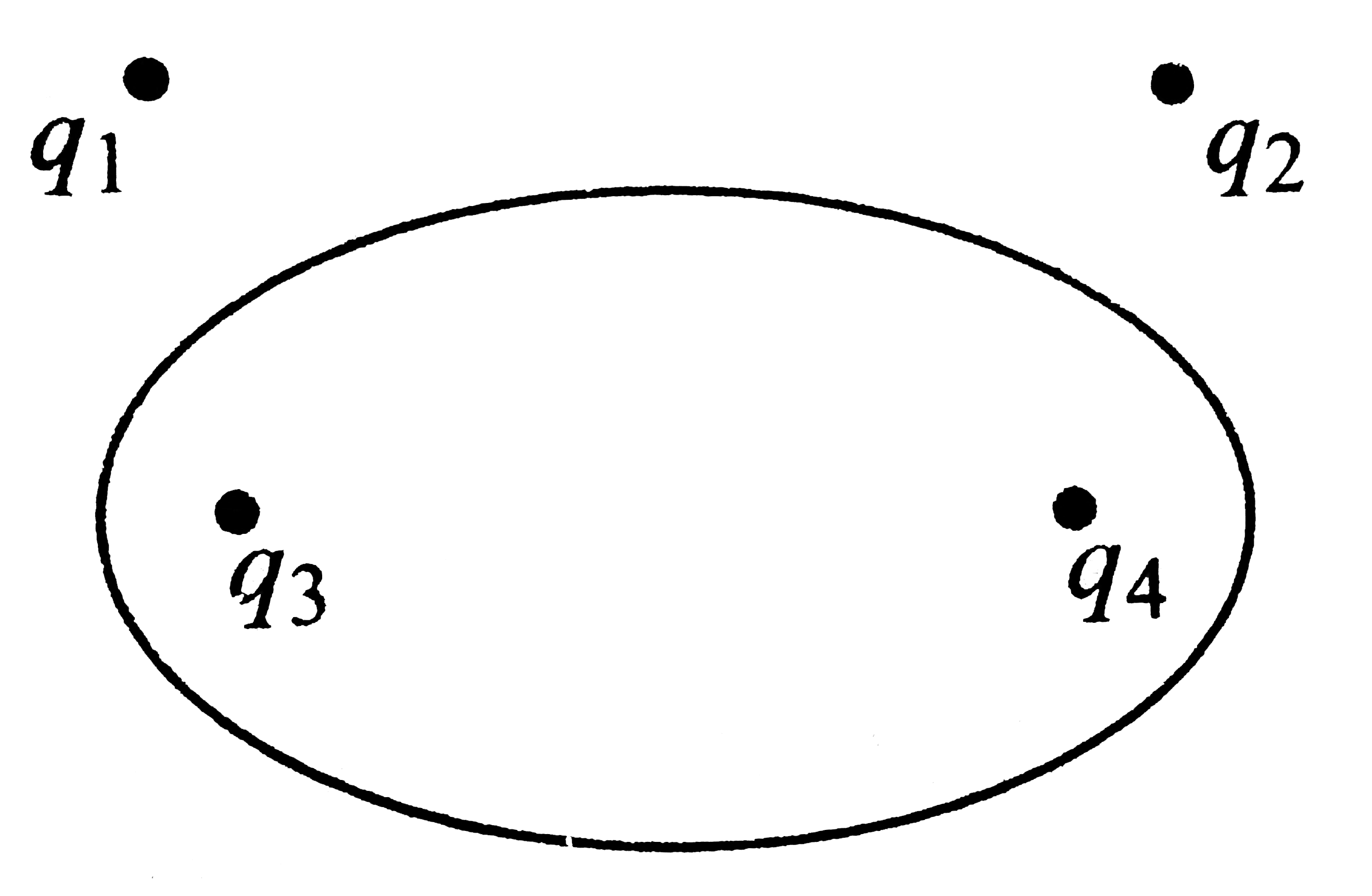
View Solution

